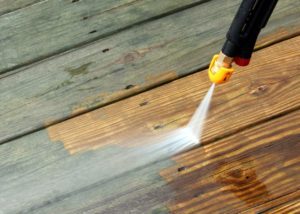
Pressure Washer Lose Pressure When Trigger Pulled?
This article will teach us how to fix pressure washers that lose pressure when a trigger is pulled.
Check for leaks
First of all, check the garden hose and the high-pressure hose to point out holes, leaks, or tears. Leaking water is the primary cause of pressure loss in the pressure washer trigger. If you find any leaks or holes, replace the hose or seal them using the recommended procedure. Also, check for the kinks in the hose that might be causing the restricted flow of water.
Check The Flow Rate
If the water inlet of the pressure washer is not getting enough water that is required, it will result in low pressure when the trigger is pulled. The minimum GPM limit is the amount of water the pressure washer requires to function and clean properly. Check the water source to see that there is an adequate water supply.
Check The Nozzle
The nozzles have a very less diameter, due to which they can block or clog pretty easily because even the tiniest particle or impurity can cause the flow restriction. There are two simple ways to check the nozzle. You can attach the nozzle and run the water by turning the garden hose on but not powering the pressure washer. If there is an issue, the flow pattern would be disturbed; otherwise, move on to the next step. You can also check it by lighting a flashlight at one end, and if the beam passes through another end, it is good. To clear the nozzle, you can use a toothpick or narrow wire or clear it with the help of an air compressor.
Use The Right Nozzle
There might be an issue with the type of nozzle that you are using. The soap injector nozzle is designed to provide low pressure to properly mix the detergent or soap with water. You can change the nozzle, and if the soap nozzle causes it, the problem would easily be solved.
O-ring Issue
The O-ring problem might also cause the low pressure of the pressure washer when the trigger is pulled. There are two places on the pressure washer where the O-ring is used. The first is in the outlet coupler, and you can check it by opening the outlet coupler. You will see a small spring and the plunger. There must be an O-ring around the plunger, and if there is none, then the issue is diagnosed. If there is a damaged O-ring, go to the hardware to buy the new one and place it in the right spot.
There is also an O-ring in the pressure washer wand. Use the same technique to reach and replace it in the same manner if it is damaged.
Unloader Valve
The unloader valve is used to control the water built up in the pump and impact the pressure washer’s pressure. Make sure that the unloader valve is set to provide the full pressure. Generally, it is mounted on top of the water inlet valve.
Check The Oil
Check the oil levels of the pressure washer and if there is a shortage of oil or if the oil is degraded or darker than usual, then replace it with the new one. The pressure engine can lose performance if there is a lack of oil, and it might result in low pressure when the trigger is pulled.
Belt Slipping
The belt is the simple component of the pressure washer that takes the engine’s power to the pump, and if there is a problem with belt slippage, then there would be a loss in power transfer resulting in low pressure. Check the belt, and if it is loose, replace it with the new one of the appropriate size.
Final Thoughts
If you have tried all of the recommended solutions, it would be better to take it to the repair shop, knowing that there is no minor issue. You can change the fuel and check the pressure as a last resort. Some pressure washers, especially the new ones, are provided with a warranty, and they can be repaired under the warranty claim without much trouble.
- 10 Best Budget Pressure Washer 2023 – Reviews & Buyer’s Guide - December 7, 2022
- 10 Best Pressure Washer for Cars Wash Reviews [2023] - December 6, 2022
- 10 Best Commercial Pressure Washer 2023 –Buyer’s Guide - December 5, 2022
